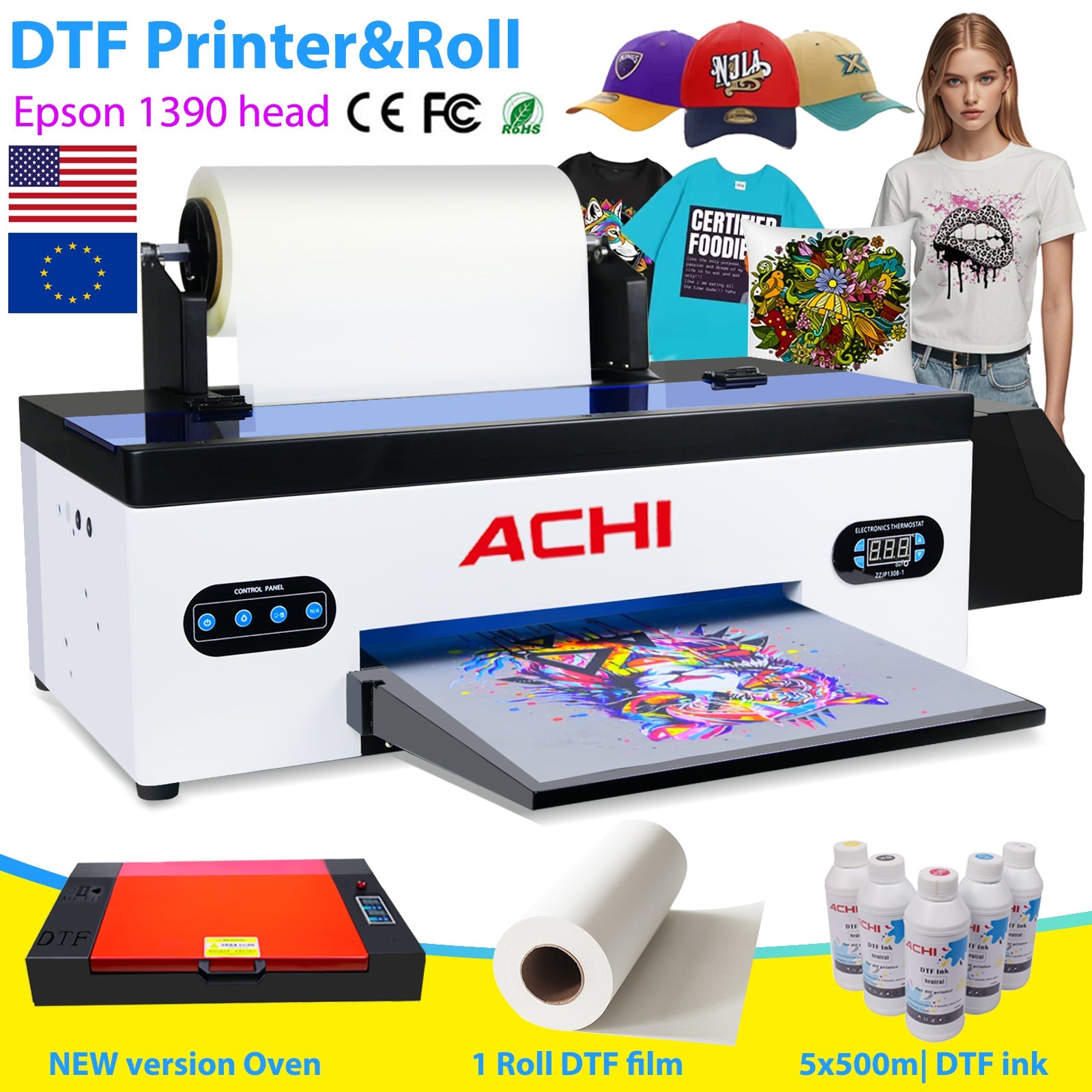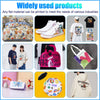ACHI A3 Roll DTF Printer Vs. Heat Transfer Vinyl: Which Is Better for Your Printing Business?

If you’re exploring methods to create custom apparel, you’ve likely encountered two popular techniques: ACHI Direct-to-Film (DTF) roll printer and Heat Transfer Vinyl (HTV).
Both use heat presses to transfer designs onto fabrics, but their processes, results, and costs differ dramatically.
Here’s a breakdown to help you choose the right technology for your needs.
⚙️ 1. How They Work: Core Processes
-
ACHI A3 Roll DTF Printer:
-
Designs are printed onto a special PET film using DTF inks (including a white ink base layer).
-
Adhesive powder is applied and cured to bond the ink.
-
The film is heat-pressed onto the fabric (e.g., 180°C for 15 seconds), and the film is peeled away.
-
Steps: Print → Powder → Cure → Press → Peel.
-
-
HTV (Heat Transfer Vinyl):
-
Designs are cut from colored vinyl sheets using a plotter/cutter.
-
Excess vinyl is "weeded" (manually removed), and the design is placed on the fabric with transfer tape.
-
Heat is applied to adhere the vinyl, and the carrier sheet is peeled off after cooling.
-
Steps: Cut → Weed → Tape → Press → Peel.
-
🧪 2. Key Differences: Performance & Versatility
| Feature | ACHI A3 Roll DTF Printer | HTV |
|---|---|---|
| Fabric Compatibility | Almost all fabrics (cotton, polyester, blends, leather) | Most fabrics, but struggles with textured/stretchy materials |
| Design Complexity | Handles intricate details, gradients, and full-color photos | Limited to simpler designs; weeding tiny details is difficult |
| Durability | 100+ washes; ink bonds with fabric fibers | Prone to cracking/peeling over time; sits on the fabric |
| Hand Feel | Lightweight layer (slightly textured) | Thick, rubbery feel (especially large designs) |

⚡ 3. Efficiency & Cost Analysis
-
Production Speed:
-
DTF skips weeding and transfer-taping steps. An entry-level DTF printer produces ~4 m²/hour vs. HTV’s ~1.75 m²/hour. Large orders are faster with DTF.
-
HTV’s manual weeding slows production, especially for complex designs.
-
-
Costs:
-
Startup Investment: HTV requires a cutter ($200–$2,000), while DTF needs a printer, powder shaker, and heat press (e.g., ACHI A3 DTF Printer).
-
Operational Costs: DTF uses more consumables (film, powder), but HTV’s labor costs are higher due to weeding.
-
🎨 4. Special Applications: Where Each Shines
-
Choose DTF For:
-
Dark fabrics (white ink base ensures vibrancy).
-
Photorealistic prints or designs with gradients.
-
High-volume orders (e.g., custom T-shirts for events)79.
-
-
Choose HTV For:
-
Specialty effects (e.g., glitter, foil, reflective finishes)58.
-
Simple, single-color designs (e.g., logos, text).
-
🎨 4. Special Applications: Where Each Shines
-
Choose DTF For:
-
Dark fabrics (white ink base ensures vibrancy).
-
Photorealistic prints or designs with gradients.
-
High-volume orders (e.g., custom T-shirts for events)79.
-
-
Choose HTV For:
-
Specialty effects (e.g., glitter, foil, reflective finishes)58.
-
Simple, single-color designs (e.g., logos, text).
-
-
Posted in
DTF printer




